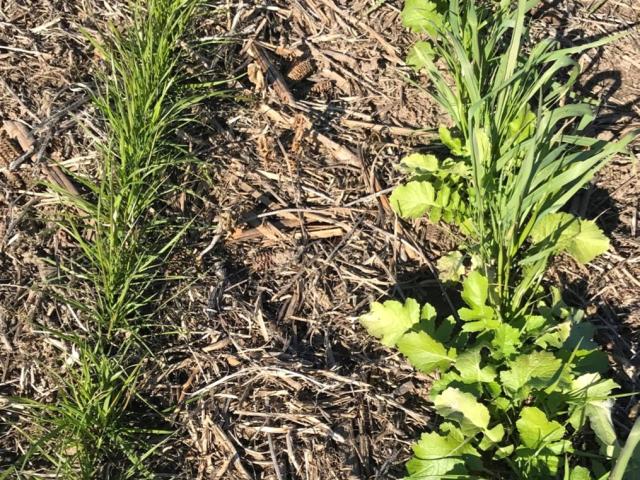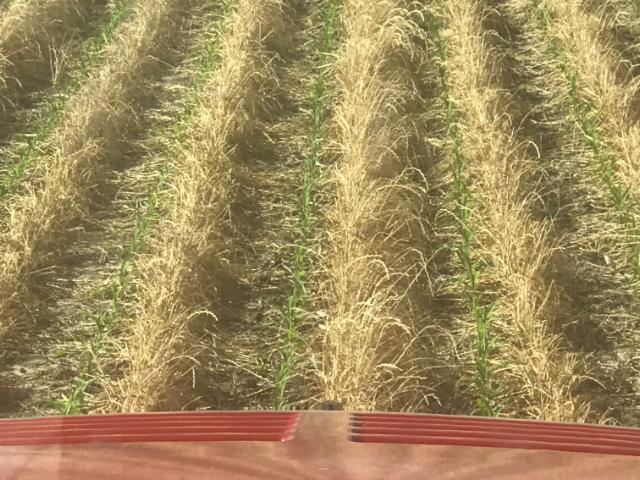
Joe and his family grow soybeans and corn in Indiana and promote sustainable agriculture practices, such as filter strips, no till farming, and cover crops.
They installed filter strips thirty years ago along two creeks running across their fields. These narrow bands of grass and clover help reduce the amount of sentiment, nutrients, pesticides and other cropland contaminants from entering the waterway. They also provide valuable winter cover, nesting sites, nectar and pollen for insects, and food for wildlife.
Converting to no till and cover crops happened more recently (thirteen years ago) and was an easy decision for Joe. He was sold on the idea after trying it out on an unworked field of soybeans. Specifically, he noticed how less water pooled in a lower area of the field during early rains, and how his next crop of corn showed less drought stress later in the season than the corn in his neighbor’s field.
A decade later, Joe is convinced that no till and cover crops have improved the quality of his farm. He points to less soil compaction, more moisture and nutrient retention, and a significant reduction in time and resources – less fertilizing, less fuel, less trips across the field, and less equipment to maintain.
He also highlights the intrinsic benefits, which he refers to as the “warm and fuzzies”. Planting is his favorite part of farming, so getting to do it twice per year means double the fun. Moreover, he takes pride in being part of the regenerative agriculture movement and promoting La Crosse Seed’s Soil First and Forage First programs.
Joe explains, “As a farmer, I want to be the one that changes the way the Kelich Farm protects the soil and builds soil health. But I also want to be an influencer in the agricultural community, generating the warm and fuzzies, not just twice a year, but all year long!”
We congratulate Joe for his well-deserved award and his commitment to environmental sustainability! We also take pride in his success with La Crosse Seed products. Joe uses the Forage First All Purpose Mix for the filter strips, and he aerial seeds the Soil First 101 cover crop mix when rotating from corn to soybeans. After soybeans going into corn, he drills ColdSnap Annual Ryegrass and typically includes Tillage Radish, Crimson Clover, Turnips, Spring Oats and Winter Camelina.
The Tipton County Soil and Water Conservation District (SWCD) was established in 1974. The District strives to encourage every person to wisely use and protect the county's soil and water through proper land use and watershed management. The District works with its partners and watershed coordinators to ensure that our resources of today are here for tomorrow.



Two different rows of cover crops planted in the fall: ColdSnap Annual Ryegrass and Crimson Clover (left) and Spring Oats, Tillage Radish and Purple Top Turnips (right).
The oats, radish and turnips died over the winter, leaving only the row of annual ryegrass and clover in the early sping.
Joe then planted corn in the empty rows.